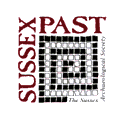Sussex Archaeological Collections: Relating to the history and antiquities of the counties of East and West Sussex
Sussex Archaeological Society, 2000. (updated 2022) https://doi.org/10.5284/1000334. How to cite using this DOI
Data copyright © Sussex Archaeological Society unless otherwise stated
This work is licensed under the ADS Terms of Use and Access.
Primary contact
Jaime
Kaminski
Sussex Archaeological Society
Barbican House
169 High Street
Lewes
BN8 1YE
Resource identifiers
- ADS Collection: 285
- DOI:https://doi.org/10.5284/1000334
- How to cite using this DOI
Chanctonbury Ring revisited : the excavations of 1988-91
by David Rudling
with a major contribution by
Sue Hamilton
on the early 1st millennium BC pottery

The Great Storm of October 1987 caused major destruction to the trees at Chanctonbury Ring, an important prehistoric and Romano-British archaeological site. Subsequent proposals to replant the destroyed trees led to a series of trial excavations within the Ring in order both to assess the archaeological remains to be affected by the proposed replanting scheme, and to re-locate the two main Roman masonry buildings discovered during treeplanting works in 1909. Along with the results of the archaeological investigations of 1987-91 the findings of earlier investigations, including those associated with a major programme of tree-planting in 1977, have been reassessed. This fresh analysis suggests an earlier, Late Bronze Age, date for the construction of the hillfort, and identifies the 'ancillary' Romano-British masonry building as a polygonal temple with a rectangular entrance chamber. Large quantities of pigs' teeth and skull fragments found in the vicinity of this temple indicate that it may have been associated with a cult of the boar.





